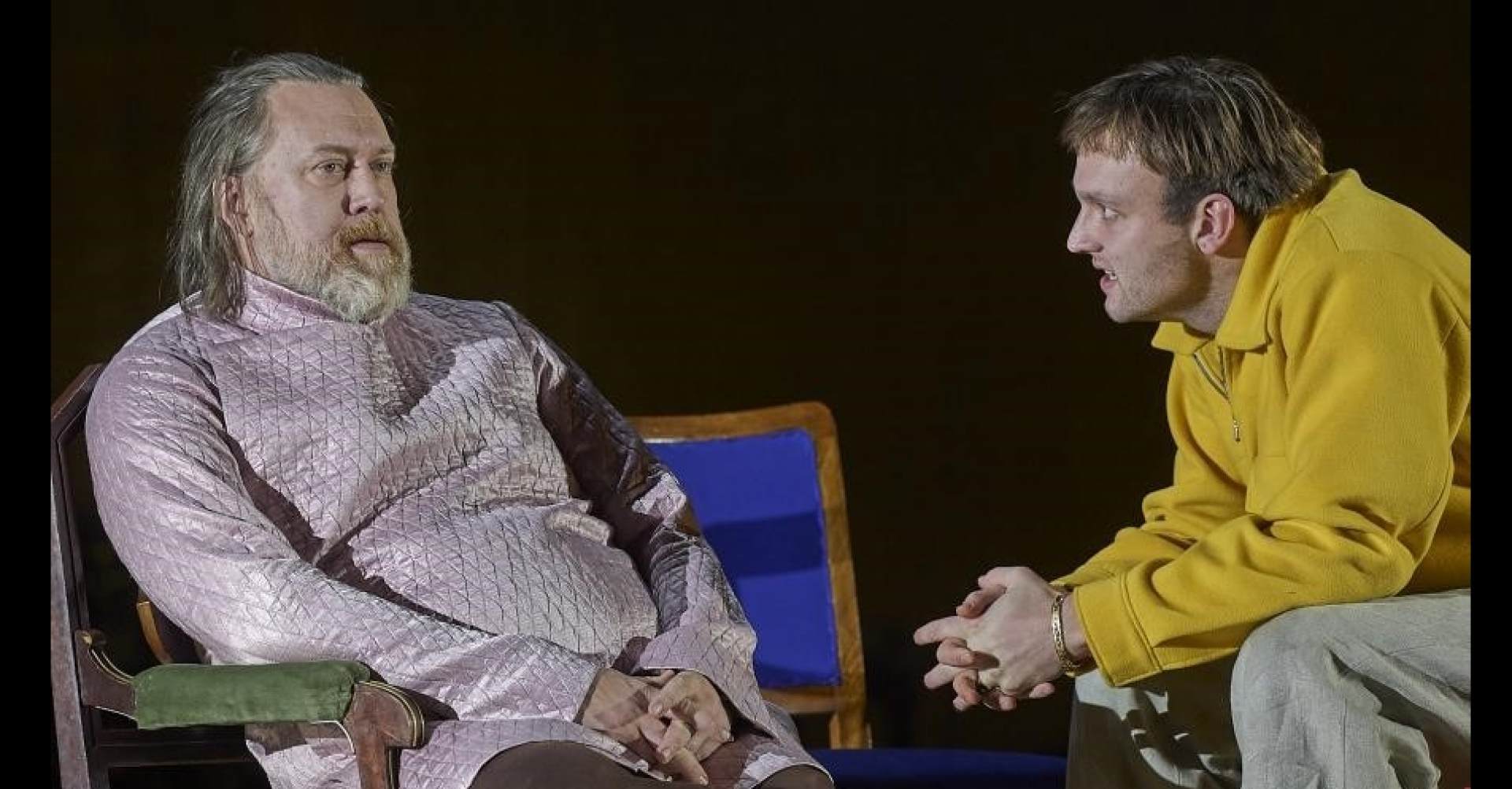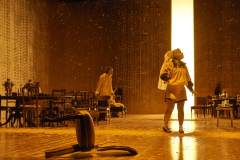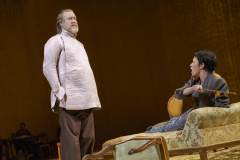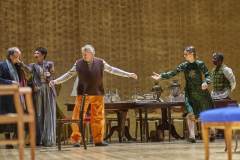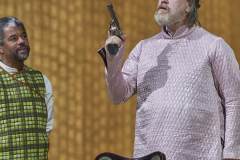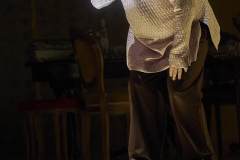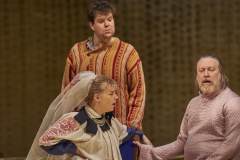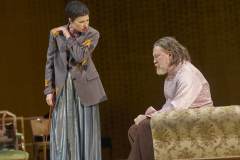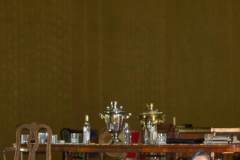November 2024 | ||||||
|---|---|---|---|---|---|---|
Mo | Tu | We | Th | Fr | Sa | Su |
The tsar has lost a war in Crimea and it is becoming clear that he will not be able to maintain his absolutist rule much longer. He still tries to make concessions and reforms, but the society that Dostoyevsky describes in his novel THE DEMONS 1871 is already in the process of dissolving.
Such times are a gratifying backdrop for comedy, for there is little funnier than watching people try to follow rules that have lost their mind. The rich widow Varvara tries to marry off her son Nikolai Stavrogin to the daughter of another rich lady. However, since Nikolai apparently had a brief relationship with Varvara's foster daughter Dasha while on a trip, Varvara hits the idea of getting Dasha out of the way by marrying her off to Stepan Verkhovensky, who is much older and emotionally and financially dependent on her. How this wedding doesn't happen on the appointed day is pure boulevard.
At the same time, THE DEMONS are a tragedy of ideas. Socialists, nihilists, Western liberals and religious nationalists are at odds with the crumbling order. In Dostoyevsky's novel, the horrors of Soviet communism are foretold, as is the orthodox nationalism that is keeping us in suspense at the moment. And at the end there is the confession of the main character Nikolaj, who pushed the experiment with a life of absolute individual freedom to a frightening conclusion.
"The central problem in all of Dostoyevsky's novels is not whether God exists, but whether one can live without faith. This question does not bring the doubt into the belief from the outside, but allows it to grow from within: If I only believe because I cannot bear not to believe, then I obviously do not believe." (Hannah Arendt)
Program and cast
Burgtheater
The stage of the Burgtheater is one of the biggest theatre stages in the world. The stage portal is 12m wide, the main stage is 28,5m wide, 23m deep and 28m high. At the opening in 1888 the stage technology was already innovatory and has been modernized on many occasions. During the reconstruction after World War II, which was accomplished in 1955, a stage equipment was installed that is still revolutionary today. The revolving stage consists of a rotating cylinder (15m high, 21m diameter) and four hydraulic lifts (12 x 4 m each). With the help of this technical features the scenery can be changed within 40 seconds. It is the biggest automatic and computer controlled stagesystem in Europe.
The Burgtheater auditorium holds 1175 seats, it has standing room for 84 visitors and 12 places for disabled visitors.
Apart from the stage-art the Burgtheater plays an important part in architecture and interior design of the 19th century in Vienna. The magnificent decoration, especially the two imperial staircases painted by Gustav Klimt, his brother Ernst Klimt and their companion Franz Matsch as well as the main foyer and the many statues, busts and paintings of famous writers and actors can be visited during our dailyguided tour.

 EN
EN DE
DE IT
IT FR
FR ES
ES RU
RU JP
JP RO
RO